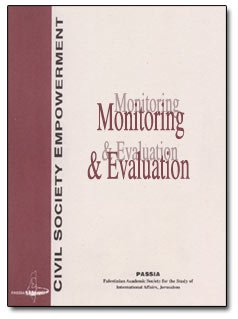Civil Society Empowerment: Monitoring & Evaluation
This publication presents the proceedings of the 2002 Monitoring and Evaluation course and offers a multifaceted introduction to the issues addressed. The course, conducted by development consultant Khalid Nabris, was designed to improve the capacity for efficient project management and implementation through the knowledge and application of M&E techniques, tools and prac¬tices. Chapters deal with M&E as part of the project planning and implementation process, with various evaluation types, models, methods and tools, with planning, design and implementation, with data analysis and report writing and with the use of M&E results.
Introduction
1. Monitoring and Evaluation: Basic Concepts and Definitions
1.1 Introduction
1.2 The Need for Monitoring and Evaluation
1.3 Project Monitoring
1.4 Project Evaluation
1.5 Relationship between Monitoring and Evaluation
2. Monitoring and Evaluation as an Integral Component of the Project Planning and Implementation Process
2.1 The Logical Framework Approach to Project Design, Implementation and Evaluation
2.2 Link Between the Logical Frame and Monitoring and Evaluation
3. Evaluation Types and Models
3.1 Overview of Types of Evaluations
3.2 Overview of Summative Evaluation Models
3.3 Baseline Survey and Data
3.4 Review of Key Outcome and Impact Evaluation Indicators
4. Monitoring and Evaluation Methods and Tools
4.1 Review of Main Methods and Tools
4.2 Selecting Monitoring and Evaluation Methods
5. Monitoring and Evaluation Planning, Design and Implementation
5.1 Planning a Monitoring System
5.2 Planning an Evaluation
6. Data Analysis and Report Writing
6.1 Analyzing Data
6.2 Development of an Evaluation Report
7. Use of Monitoring and Evaluation Results
Appendices
Appendix 1: Glossary
Appendix 2: Selected Internet Resources

